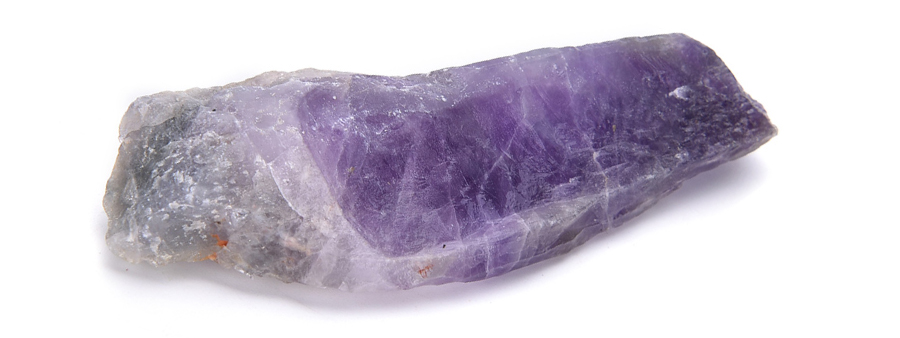Like most gemstones, amethyst’s history is full of legend, myth, and magic. The luscious purple hue of February’s birthstone has long been a source of speculation, dating back to ancient Greece. There are two persisting Greek myths that endeavor to explain the creation of amethyst, however, neither are found is classical Greek mythology literature and are therefore looked at somewhat dubiously, especially with one of the myths having been fashioned by a French poet in the mid-16th century. The myths involve the interplay between Artemis and Dionysus, and Bacchus and Diana.
While these ancient stories didn’t provide lasting answers as to the origins of amethyst, the ancient Greeks did make one very important, and persisting, contribution: the name. Amethyst comes from two Greek words: “a-,“ meaning “not” and “méthystos,” meaning “intoxicated.” Amethyst literally means “not intoxicated.” The ancient Greeks believed, because of the purple wine color of amethyst, that the stone would prevent drunkenness in the wearer. Many amulets and jewelry pieces were made featuring amethyst. Even drinking vessels, like goblets, were carved from amethyst. The vessels were thought to take away the inebriating effects of alcohol. Sadly, this belief turned out to be just a myth. Amethyst, despite its wine hue, has no such power.
Amethyst was also thought to have other mythical powers. Aside from preventing drunkenness, ancient peoples believed that amethyst made the wearer clear-headed in business and quick-witted in battle. Because of these beliefs, amethyst is prominently featured in British coronation regalia. These long-held beliefs about amethyst’s power helped shape the acceptance of amethyst into the upper echelons of gemstones, ranking up there with ruby, sapphire, and emerald. Amethyst was highly valued and coveted until the mid-18th century, when huge quantities of the gem were discovered in Brazil.
| (Left) Close Up of the amethyst set in the Head of the Sovereign's Sceptre with Cross | (Center) Queen Elizabeth II wearing the traditional coronation regalia | (Right) Close up of Saint Edwards Crown set with amethyst among many other gems |
Although this large Brazilian deposit caused amethyst’s tumble from gemstone glory, it is not the largest deposit of amethyst in the world. The largest amethyst vein is in Austria, with other large mines in Uruguay, Zambia, and of course, Brazil. Amethyst has also been discovered in numerous mines in the United States, in Arizona, Colorado, Texas, and the Lake Superior region, to name just a few.
While amethyst is found all over the world, the best amethyst is found in Siberia, Sri Lanka, Brazil, and the far east. The highest value amethyst is called Deep Russian. And although it is exceptionally rare, it is still significantly lower in value than the best grades of sapphire (Padparadscha) and ruby (Pigeon’s Blood). In contrast to many other gemstones, the driving factor of amethyst’s value is not the carat weight or size, but rather the color. The deeper and more vibrant the color, the more valuable the stone. With amethyst color ranging from a light pinkish-purple to a deep royal purple, it’s easy to see how the cost of amethyst will vary.
Amethyst’s color though can be altered. Overexposure to light, for example, will cause the color to fade. But you need not worry about this in your jewelry. Typical wear for jewelry will not provide enough exposure to light to fade the amethyst. But if it’s a darker hue you’re after, amethyst’s color can be enhanced and deepened by irradiating it. Irradiation is process involving bombarding the gemstones with x-rays, gamma rays, or other radiation, to alter their color. Many gemstones can be irradiated, even diamonds. A good jeweler, like André Duscio at Andre’s Fine Jewelers, will be able to source stones that have not been altered in a laboratory.
Amethyst is quartz, which means it’s a very good candidate for jewelry making. Amethyst is hard and strong. Quartz is used liberally in jewelry. The brighter colored quartz, like amethyst and citrine, is used in necklaces, pendants, earrings, etc. But quartz is also an extremely common piece of the internal workings of watches. But with extensive use in jewelry comes an interesting problem. There is a gemstone referred to as “green amethyst,” but this name isn’t accurate. Green amethyst is actually called prasiolite, but it also goes by the names “vermarine” and “lime citrine.” The reason it can’t be accurately called amethyst is because the minerals that make up the composition are not what are classified as amethyst (which is silicone dioxide).

Natural amethyst crystal
Another factor complicating the use of amethyst in jewelry is the way the bands of color appear in the crystalline structure. The color appears in parallel bands, often in varying depths of color. What a skilled lapidary (a skilled artisan who specializes in cutting stones) will do is cut the stone in such a way that the bands run parallel to the cut faces of the stone, giving a homogeneous color to the final faceted gemstone. The size of these bands greatly affects the ability of the stone to be cut into a homogeneous color. Sometimes, it is not possible. In those cases, those amethysts are not likely to be used in fine jewelry, unless the jeweler is trying to achieve a very specific look.
Amethyst is a gorgeous stone, even though it may not be the most valuable of gems. Its purple color is pretty rare, with not very many gemstones coming in a purple hue. But the myths surrounding it make for entertaining tales about a gem that is as storied as it is beautiful.






